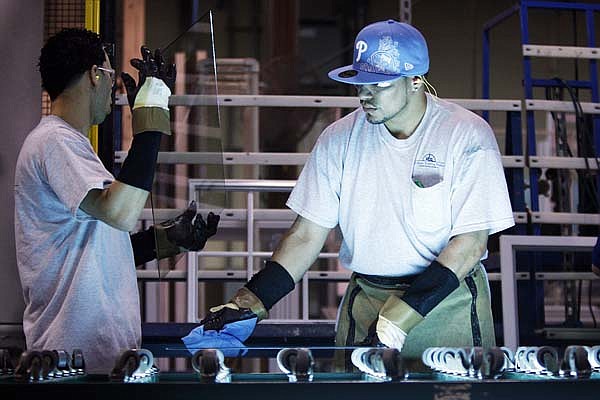WASHINGTON — The economy grew at an annual rate of 2.7 percent in the first quarter, the Commerce Department said Friday, offering its third and final estimate for the period.
Growth was slower than initially thought because consumers spent less and imports rose faster that previously calculated.
Economists anticipate even slower growth ahead as companies adjust their stockpiles more in line with sales. Factory output has climbed this year, but it was driven more by businesses replenishing their warehouses after the recession and less by consumer demand.
“The economy is growing, but still at a disappointingly slow pace,” said Zach Pandl, an economist at Nomura Securities. Take away businesses restocking their inventories and “you still have a lukewarm recovery,” he said.
Other factors could hold back growth. Federal government stimulus spending is expected to fade. The European debt crisis could slow U.S. exports and world trade. And state and local governments are likely to rein inspending and raise taxes as they struggle to close budget gaps.
“This is still the weakest and longest economic recovery in U.S. postwar history,” said Paul Dales, U.S. economist with Capital Economics.
High unemployment and tight credit have kept consumers from increasing their spending as in past recoveries. The housing industry has played a big role after previous recessions.
But this time it is slumping and subtracting from economic growth.
Most economists expect the unemployment rate, currently at 9.7 percent, to remain above 9 percent through the end of the year. The unemployment rate in Arkansas in May stood at 7.7 percent.
The economy has grown for three consecutive quarters after shrinking for four straight quarters during the recession - the longest contraction since World War II.
In normal times, 2.7 percent growth would be considered healthy. But it’s relatively weak for a recovery after a steep recession. After the last sharp downturn in the early 1980s, gross domestic product grew at rates of 7 percent to 9 percent for five consecutive quarters.
The department’s report is the third of three estimates it makes for each quarter’s GDP, the broadest measure of the nation’s economic output. Friday’s figure is below last month’s 3 percent estimate of first-quarter growth. The rate declined from earlier reports because consumers spent less than previously estimated, while the nation imported more goods.
The government updates the figures with new information that is released after the initial reports.
Consumer spending rose by 3 percent, almost double the pace of the previous quarter. That’s below the previous month’s estimate of a 3.5 percent increase. Businesses ratcheted up their spending on equipment and software by 11.4 percent.
Growth of roughly 3 percent is needed just to generate enough jobs to keep up with increasing population.Many economists say growth needs to reach 5 percent for a full year to lower the jobless rate, by 1 percentage point.
In the past three quarters, growth has averaged 3.5 percent.
GDP measures the value of all goods and services produced in the United States and is considered the best measure of the country’s economic health.
Business, Pages 29 on 06/26/2010
